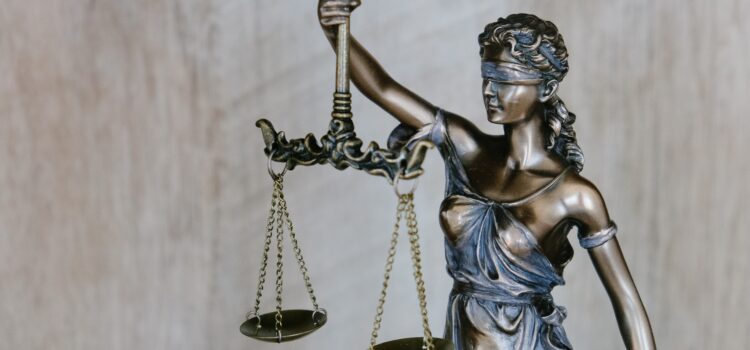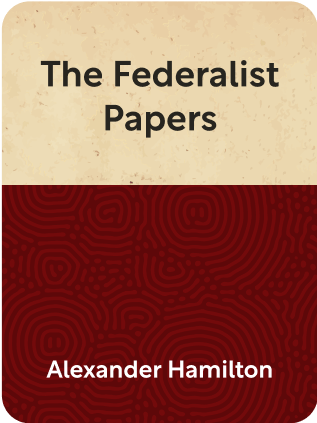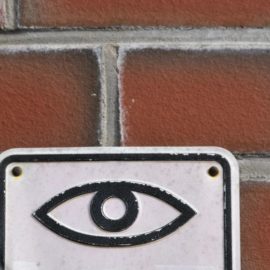

This article is an excerpt from the Shortform summary of "The Federalist Papers" by Alexander Hamilton. Shortform has the world's best summaries of books you should be reading.
Like this article? Sign up for a free trial here .
What is Federalist Paper 51? How does it address checks and balances in the Constitution?
Federalist Paper 51 is all about the system of checks and balances. The doctrine of separation of powers is an important part of The Federalist Papers. It was used to help address concerns about an overly powerful central government.
Read more about the doctrine of separation of powers, a system of checks and balances, and Federalist Paper 51.
Federalist Paper 51: Theory of Separation of Powers
All constitutional forms of government have three branches:
- The legislative branch, which writes the laws;
- The executive branch, which enforces the laws; and
- The judicial branch, which interprets the laws.
A basic principle of republican government, going back to the writings of the French political philosopher Montesquieu, is that these functions must remain separate. Tyranny results when there is too much overlap between these functions: a president, for example, should not be able to write, enforce, and interpret his own laws.
Critics of the new Constitution argued that its provisions for the theory of separation of powers were too weak and that the result would be a corrupt despotism. Federalist 51, however, argued that the theory of separation of powers was a general principle that was impossible to follow completely—some mixture and overlap between the powers was inevitable and, indeed, necessary.
For example, the British constitution (at the time regarded as the world’s finest) gave the monarch (the executive) the power to veto laws passed by Parliament (the legislative branch).
Similarly, the various state constitutions blended the powers to one degree or another. Some states had the legislature appoint the executive cabinet, and even the chief executive himself. Others allowed the legislature to impeach members of both the executive and judicial branches. In other states, the executive branch had sole authority for appointing members of the judiciary.
Simply declaring on paper that the three branches ought to be separate was a totally insufficient way to guarantee this end. And instead of striving for complete separation of powers (which was an impossibility), it was far more important to imbue the Constitution with the principle of checks and balances.
The new Constitution was well-designed with a robust system of checks and balances to ensure that the branches remained coequal, that none reigned supreme over the others, and that each had the means to hold the others in check.
The System of Checks and Balances in the Constitution
The government would be composed of human beings, with all their fallacies and weaknesses. As we’ve emphasized, if humans were perfect, there would be no need for government in the first place.
Any rational plan of government needed to proceed with this insight into human nature in mind. The new Constitution, therefore, would not seek to create a government where individual ambition or thirst for power played no role—that would be an impossible standard to meet. Instead, the new government would need a system of checks and balances in the Constitution.
The three branches of government would compete with one another for power according to Federalist Paper 51. In the process, power grabs by one branch would be checked by the power grabs of another. The mutual ambitions of the players in this system would cancel each other out, preserving liberty.
(Shortform note: The authors of the Constitution and The Federalist Papers seem not to have anticipated the rise of organized political parties. Indeed, the first two parties—the Federalists and the Democratic-Republicans—came into existence almost immediately after ratification. With the arrival of political parties, the main theatre of political competition was not between branches of government. Instead, co-partisans began to cooperate across branches of government to achieve shared party goals, precisely the opposite of what the Framers had intended. Ironically, these original parties were led in large part by the primary authors of The Federalist Papers—Hamilton for the Federalists and Madison for the Democratic-Republicans.)
Now, let’s turn to the specific branches of government and their components to get a fuller picture of how the system of checks and balances was designed to function.
Legislative Branch
The House of Representatives is the lower house of the national legislature, with members apportioned within each state by population. Because membership was to be determined by population, the larger states would naturally hold sway in the House. That power would be checked, however, by the Senate, where the smaller states would dominate. The House would tend to have the upper hand, however, because the Constitution mandated that all revenue bills originate from the lower chamber. This gave the House the decisive power of the purse.
The Senate is the upper chamber of the national legislature. Senators were to serve six-year terms and be elected by the state legislatures—not by the people themselves. By having state legislatures choose senators, the Constitution preserved an essential role for state governments in the composition of the national legislature.
(Shortform note: The Seventeenth Amendment to the Constitution, ratified in 1913, ended senatorial election by state legislatures, mandating instead that senators be directly elected by the voters of their states.) This was a continuation of the federal practices of the Articles of Confederation. It checked the national government orientation of the House, in which the people, not the states, directly elected representatives.
Lastly, each state was to have two senators, regardless of population. This was also meant to counterbalance the House, where representation was proportional based on a state’s population. Naturally, the Senate conferred an advantage on smaller states, who received disproportional representation in the upper chamber relative to their actual number of voters.
Executive Branch
The presidency, the chief executive of the federal government, was perhaps the most controversial and hotly contested feature of the Constitution. The president had checks on the other branches with the power to:
- Veto bills passed by both houses of Congress, thus serving as an important check on legislative power;
- Propose legislation;
- Negotiate treaties;
- Nominate executive officials and federal judges;
- Make temporary appointments when Congress was not in session;
- Adjourn Congress when it could not agree on a time of adjournment;
- Issue pardons, except in cases of impeachment; and
- Direct and oversee the armed forces as commander-in-chief
Federalist Paper 51: Judicial Branch and the System of Checks and Balances
The third branch of government, the judiciary, is unique. The federal courts exercise power through judicial review. This is the power of the courts to declare null and void those laws or executive orders that are in violation of the Constitution.
Judicial review would serve as a powerful check on both the executive and legislative branches, according to Federalist Paper 51. While courts generally do not have many formal powers to enforce their rulings, Congress and the president have historically complied with court orders, even when they disagreed with them.
Given its crucial function, and judges’ comparative lack of enforcement power, it was important that the judiciary be independent from the executive and legislative branches. Most importantly, judges were to serve for life, provided that they maintained “good behavior” on the bench. Absent any egregious offenses like soliciting bribes, which would violate the Good Behavior Clause, judicial appointments would be permanent. Impeachment offers a check on violations of the Good Behavior Clause, according to Federalist Paper 51.

———End of Preview———
Like what you just read? Read the rest of the world's best summary of Alexander Hamilton's "The Federalist Papers" at Shortform .
Here's what you'll find in our full The Federalist Papers summary :
- The genius of the founding fathers in how they designed the United States Constitution
- Why it was critical for the United States to form a union rather than stay separated as colonies
- How Alexander Hamilton anticipated social issues that are still relevant today






